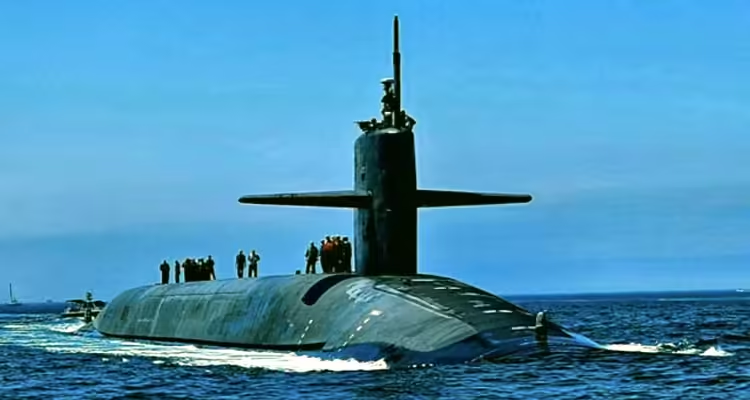
New Delhi: In a significant step to enhance its nuclear deterrence capabilities, India has launched its fourth nuclear-powered ballistic missile submarine (SSBN), codenamed S4, at the Ship Building Center (SBC) in Visakhapatnam. This development comes at a time of heightened diplomatic tensions with Canada.
The launch of S4 follows the commissioning of India’s second SSBN, INS Arighaat, on August 29, 2024, by Defence Minister Rajnath Singh. The third SSBN, INS Aridhaman, is slated for commissioning next year.
On October 9, the Cabinet Committee on Security (CCS) approved the construction of two additional nuclear-powered attack submarines, further signaling India’s intent to bolster its naval presence in the Indo-Pacific region. The launch of S4 on October 16 coincided with Defence Minister Singh’s inauguration of a Very Low Frequency (VLF) Naval Station in Telangana, aimed at enhancing communication with India’s strategic naval assets.
S4 is approximately 75 percent indigenous and equipped with K-4 ballistic missiles, which have a range of 3,500 kilometers. This marks an advancement from the earlier INS Arihant, which carries shorter-range K-15 missiles. India’s SSBN fleet is designed for unlimited endurance, capable of remaining submerged for extended durations, limited only by provisions and crew fatigue.
Both INS Arihant and INS Arighaat are currently conducting deep-sea patrols, while India is set to acquire a Russian Akula-class attack submarine on lease by 2028. The naming convention for India’s SSBN fleet has been structured: INS Chakra, the first leased nuclear attack submarine, is designated S1, followed by INS Arihant (S2), INS Arighaat (S3), and the newly launched INS Aridhaman (S4).
Future classes of SSBNs are expected to double the displacement of the Arihant class and carry missiles with ranges exceeding 5,000 kilometers. The Modi administration’s emphasis on submarine-based nuclear deterrence reflects concerns over the vulnerability of aircraft carriers to China’s long-range missile capabilities, leading to a prioritization of submarine development over plans for a third aircraft carrier.
Additionally, the sixth diesel-electric attack submarine of the Kalvari class, INS Vagsheer, is expected to be commissioned in December. India is also set to collaborate with the French Naval Group to construct three advanced diesel-electric attack submarines at Mazagon Dockyards.
As China increases its naval presence in the Indian Ocean, deploying 10-11 warships monthly and planning carrier-based patrols by 2025-26, India’s strategic submarine fleet is positioned to play a crucial role in securing the Indian Ocean Region (IOR) and addressing emerging threats.



